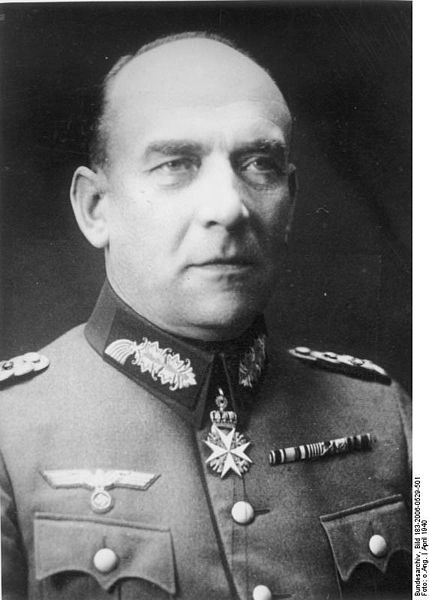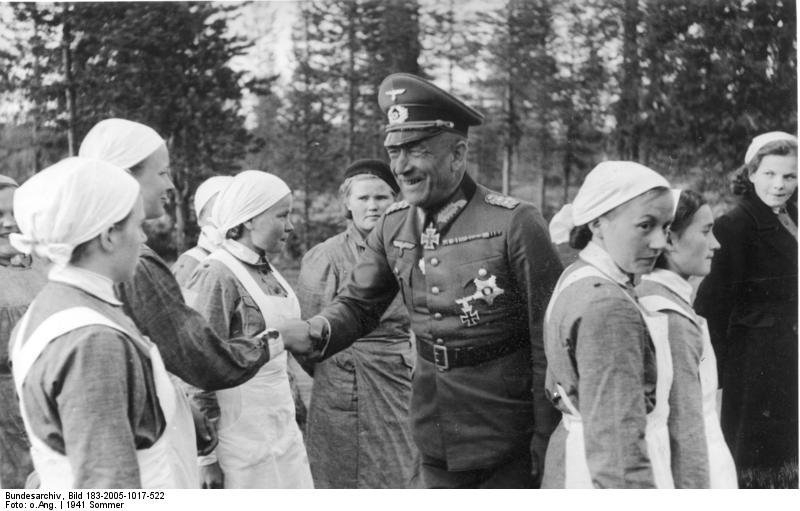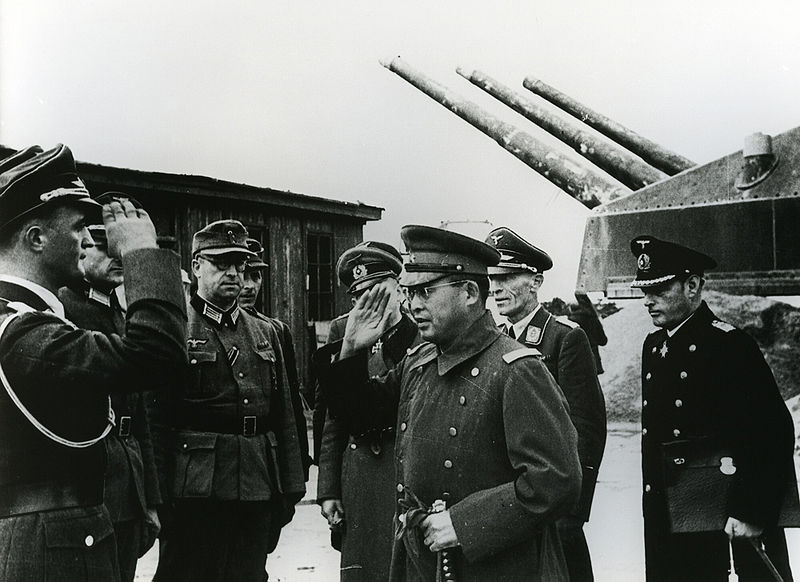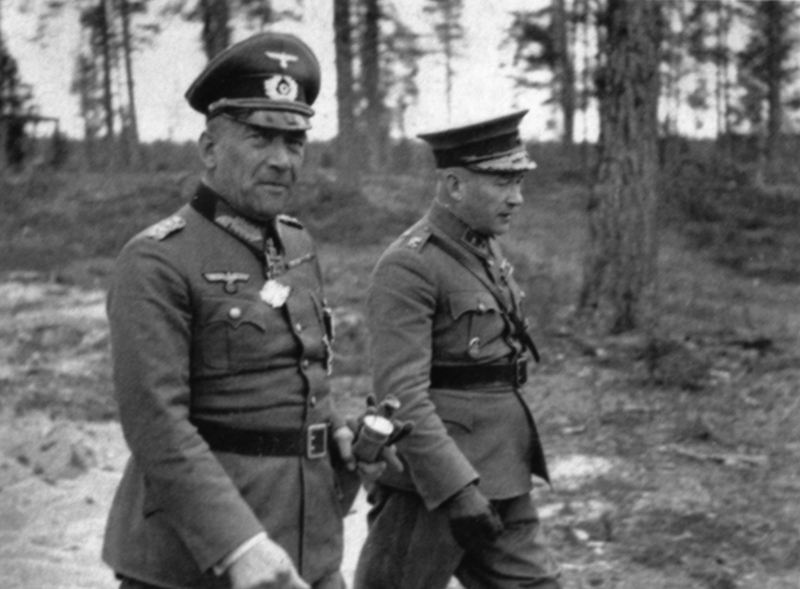<Back to Index>
- General of the German Army Nikolaus von Falkenhorst, 1885
PAGE SPONSOR
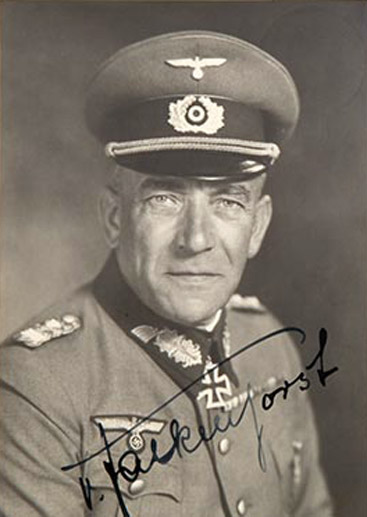
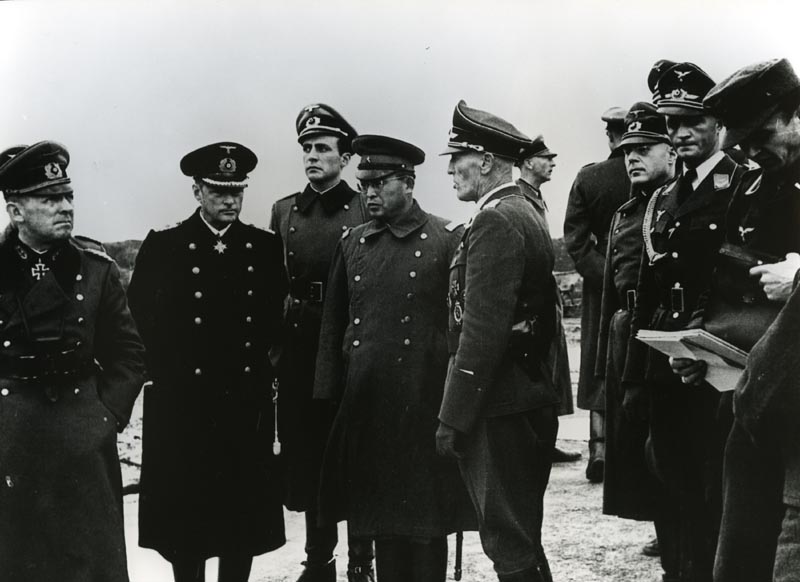
Nikolaus von Falkenhorst (born Nikolaus von Jastrzembski, 17 January 1885 – 18 June 1968) was a German General in World War II. He planned and commanded the German invasion of Denmark and Norway in 1940, and was commander of German troops in Norway from 1940 to 1944.
Falkenhorst was born in Breslau into an ancient Silesian military and noble family, the nobles von Jastrzembski (Bad Königsdorff - Jastrzemb in Upper Silesia); he voluntarily changed this Slavic Silesian - derived family name to the Kulturkampf - Germanized version Falkenhorst ("falcon's eyrie") early in his career; the change of name was confirmed by a decree of June 6, 1911. He joined the Imperial German army in 1907 and during World War I was given various regimental and staff appointments. He served in the Freikorps in 1919. He was transferred to the Reichswehr, and between 1925 and 1927 served in the Operations Division of the War Ministry.
Falkenhorst was promoted to Colonel on 1 October 1932, and was military attaché in the German embassies in Czechoslovakia, Yugoslavia and the kingdom of Romania between 1933 and 1935. On 1 July 1935, he was promoted to Major General and Chief of Staff of the Third Army and in 1937 to Generalleutnant. In 1939 he commanded the Twenty - first Army Corps during the Invasion of Poland, and was promoted to General der Infanterie.
On 20 February 1940, Hitler informed Falkenhorst that he would be ground commander for the invasion of Norway (Operation Weserübung), and gave him until 5 p.m. the same day to come up with a basic plan. With no time to consult military charts or maps, Falkenhorst picked up a Baedeker tourist guidebook of Norway at a stationery store on his way to his hotel room, where he planned the operation from maps he found in that book. Hitler promptly approved his plan.
The invasion was a success, aside from heavy losses inflicted upon the German Navy. Allied forces tried to counter the German move, but Falkenhorst's troops drove them out of the country.
Falkenhorst remained in charge of the Norwegian garrison. In contrast to the civilian administration, the military forces aimed to form an understanding with the Norwegian people, and Falkenhorst ordered his men to treat them with courtesy. An apocryphal story, which was much believed by both sides, told of a Norwegian woman who complained that a German soldier had stolen some of her jam. The next morning, she was invited to come to the local army post to see the man shot by firing squad.
In December 1942, he made a plan for the invasion of Sweden if necessary (Operation Polarfuchs - "Artic Fox"). This plan required ten German divisions. Falkenhorst thought it would succeed in ten days.
Falkenhorst was dismissed from his command on 18 December 1944, for opposing certain radical policies of Josef Terboven, the Nazi Reich Commissioner for the civil authorities of German - occupied Norway. He held no other commands during the war.
After the war, Falkenhorst was tried by a joint British - Norwegian military tribunal for violating the rules of war. He had passed on the Führerbefehl known as the "Commando Order" which required captured saboteurs to be shot as spies (several were), and was therefore convicted and sentenced to death in 1946. The sentence was however later commuted to twenty years' imprisonment, after successful appeal by Sven Hedin.
Falkenhorst was released from Werl prison on July 23, 1953, due to bad health. He died in Holzminden (in West Germany where his family had fled to from Lower Silesia) in 1968, following a heart attack. His daughter was married to General Erich Dethleffsen.
